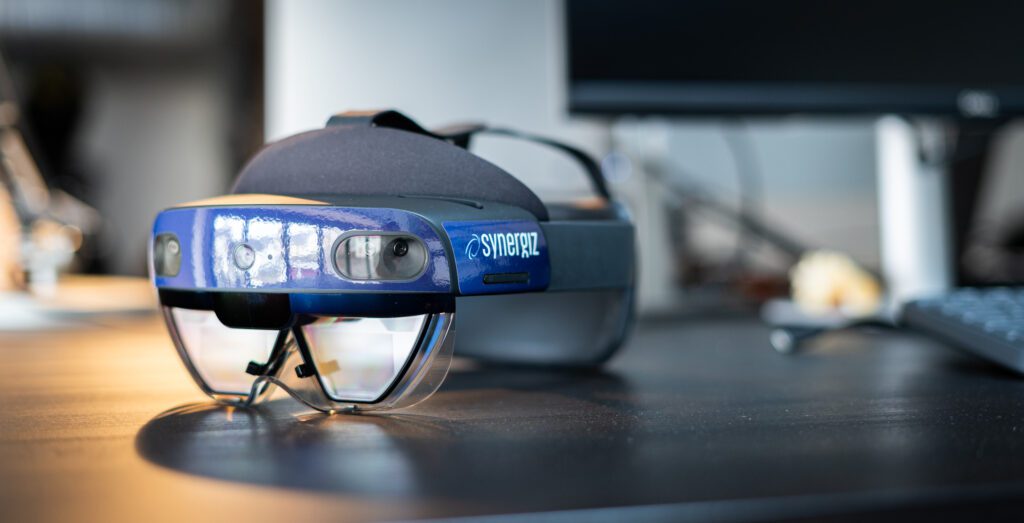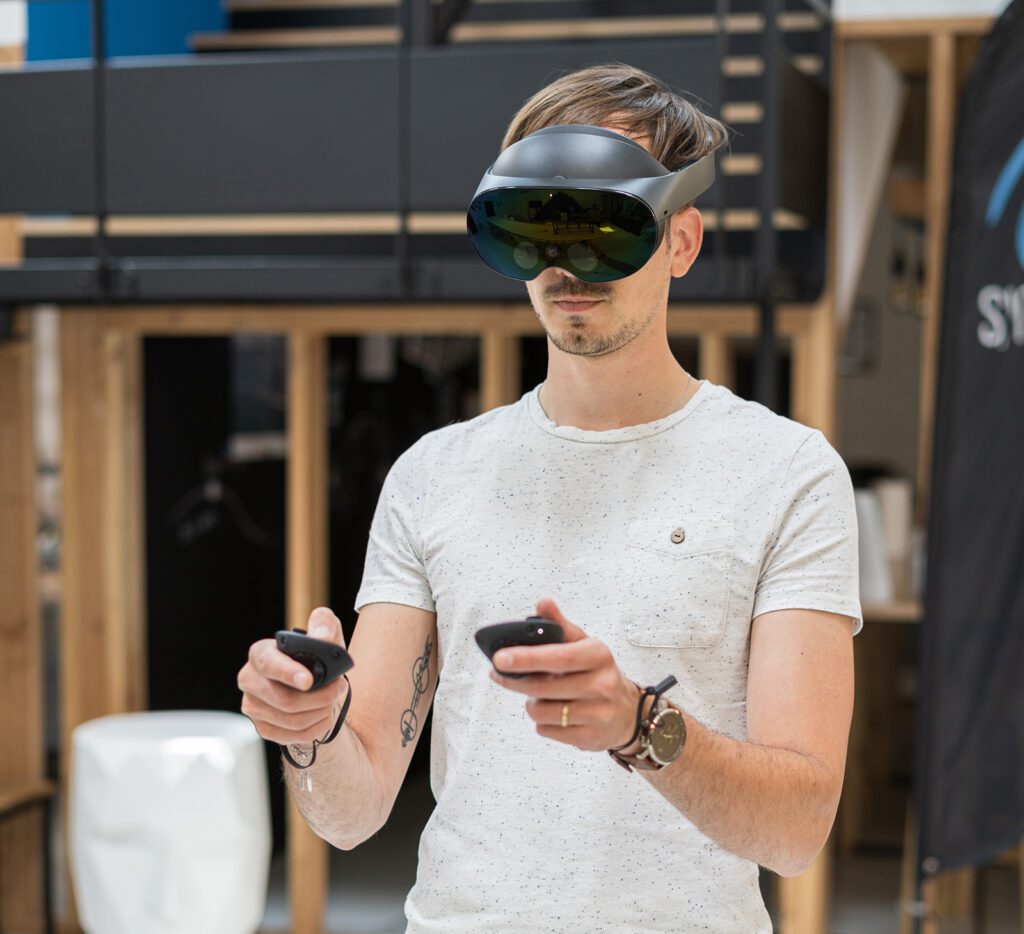Reading time: less than 4 minutes.
Mixed reality is revolutionizing the way we interact with the digital world and the physical world around us. Depending on the project you want to undertake, choosing the right mixed reality headset is a crucial step. It’s worth noting that some professionals use the terms “augmented reality headset” or “augmented reality glasses” to refer to mixed reality headsets. You have two main options: see-through headsets like Microsoft’s HoloLens 2 or the Magic Leap 2, and pass-through headsets like the Meta Quest Pro, PICO 4E, or soon-to-come Apple Vision Pro. Understanding the differences between these two types of headsets and the use cases they address is essential.
See-through mixed reality headsets offer an immersive experience where 3D elements are overlaid onto your view of the real world. Here are some key advantages:
1- Interaction with the real world and contextualization of information
See-through headsets allow you to see and interact with your real-world environment while displaying holograms, 3D elements, and various digital content (videos, PDFs, images, etc.). These elements seamlessly adapt to your reality, providing virtual information that is contextually integrated into your natural field of vision while allowing you to continue seeing the real world with your own eyes.
2- Hands-free operation
With see-through headsets, you interact with holograms and digital content using gestures, gaze, or voice commands. This freedom of interaction is a significant advantage in professional contexts where you need to be free in your movements to focus on your tasks.
3- Multiple use cases
See-through mixed reality headsets offer the highest visual quality and are particularly helpful for frontline operators, digitizing field operator practices, and enabling collaboration among professionals in various industries such as manufacturing, healthcare, transportation, agribusiness, energy, luxury, culture, and more. Here’s a non-exhaustive list of key use cases:
- Remote team assistance quickly and efficiently.
- Industrial space planning, retail, laboratories, etc.
- Representation of a digital twin.
- Local or remote collaboration.
- Visualization of complex data overlaid onto reality.
- Improved quality of medical care and surgical procedures.
- More attractive product presentations and launches.
- Enhanced learner training with higher retention rates and better understanding.
- Simplified product quality control.

On the other hand, pass-through mixed reality headsets work by restoring the real environment through cameras and displaying the feed on a screen in front of your eyes. Here are some advantages of these headsets:
1- Versatility and immersive experiences
Pass-through headsets are an excellent solution for blending mixed reality and virtual reality applications, making them more versatile for immersive experiences. They are highly appreciated in the fields of entertainment, culture, and education.
2- More affordable price
Compared to see-through headsets, pass-through headsets are generally more affordable, making them an attractive option.
3- B2B and B2B2C use cases
Pass-through headsets are naturally suited for information workers and end consumers. They offer the following main use cases:
- Training: Interactive and engaging training experiences by simulating real scenarios in a virtual environment. Learners can acquire practical skills while remaining in a safe environment.
- Culture: Mixed reality headsets offer a new way to experience a museum visit, where visitors can explore interactive exhibitions and artworks while being actively engaged.
- Entertainment/Creativity: Pass-through mixed reality headsets seamlessly combine the best of virtual reality with your own reality, unleashing limitless creativity.

So, how do you choose between all these possibilities?
The choice between a see-through headset and a pass-through headset depends on a fundamental question: do you need to see the environment around you with your own eyes? If the answer is yes, naturally, you should opt for a see-through headset, like the Microsoft HoloLens 2.
If you are looking for mixed reality features for professional applications related to training, culture, entertainment, a pass-through headset may be preferred.
The Synergiz teams, experts in mixed reality, are here to help you deliver the most suitable solution. Whichever headset you choose, mixed reality promises captivating experiences that will continue to evolve and enrich as technology advances.
